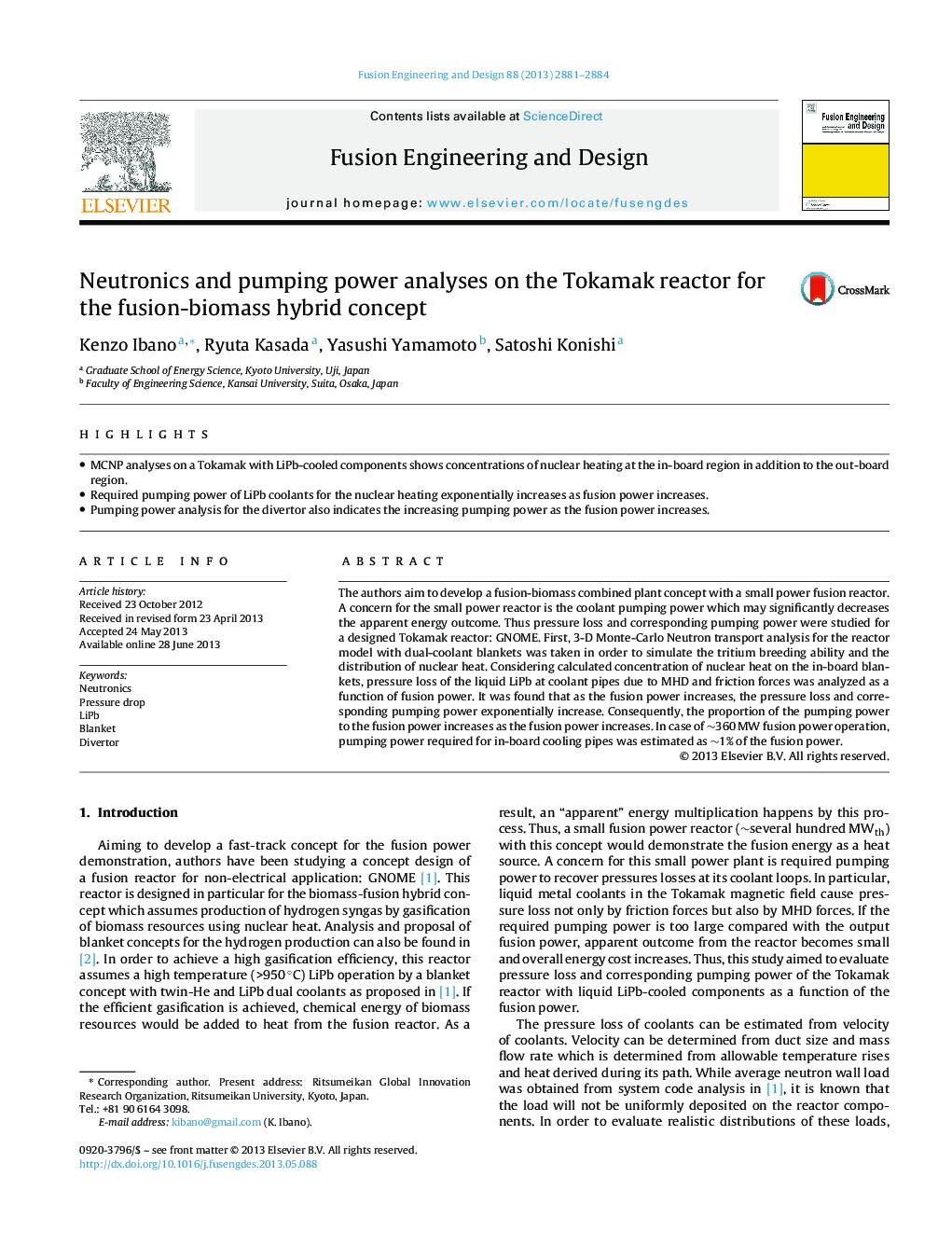| Article ID | Journal | Published Year | Pages | File Type |
|---|---|---|---|---|
| 271381 | Fusion Engineering and Design | 2013 | 4 Pages |
•MCNP analyses on a Tokamak with LiPb-cooled components shows concentrations of nuclear heating at the in-board region in addition to the out-board region.•Required pumping power of LiPb coolants for the nuclear heating exponentially increases as fusion power increases.•Pumping power analysis for the divertor also indicates the increasing pumping power as the fusion power increases.
The authors aim to develop a fusion-biomass combined plant concept with a small power fusion reactor. A concern for the small power reactor is the coolant pumping power which may significantly decreases the apparent energy outcome. Thus pressure loss and corresponding pumping power were studied for a designed Tokamak reactor: GNOME. First, 3-D Monte-Carlo Neutron transport analysis for the reactor model with dual-coolant blankets was taken in order to simulate the tritium breeding ability and the distribution of nuclear heat. Considering calculated concentration of nuclear heat on the in-board blankets, pressure loss of the liquid LiPb at coolant pipes due to MHD and friction forces was analyzed as a function of fusion power. It was found that as the fusion power increases, the pressure loss and corresponding pumping power exponentially increase. Consequently, the proportion of the pumping power to the fusion power increases as the fusion power increases. In case of ∼360 MW fusion power operation, pumping power required for in-board cooling pipes was estimated as ∼1% of the fusion power.
